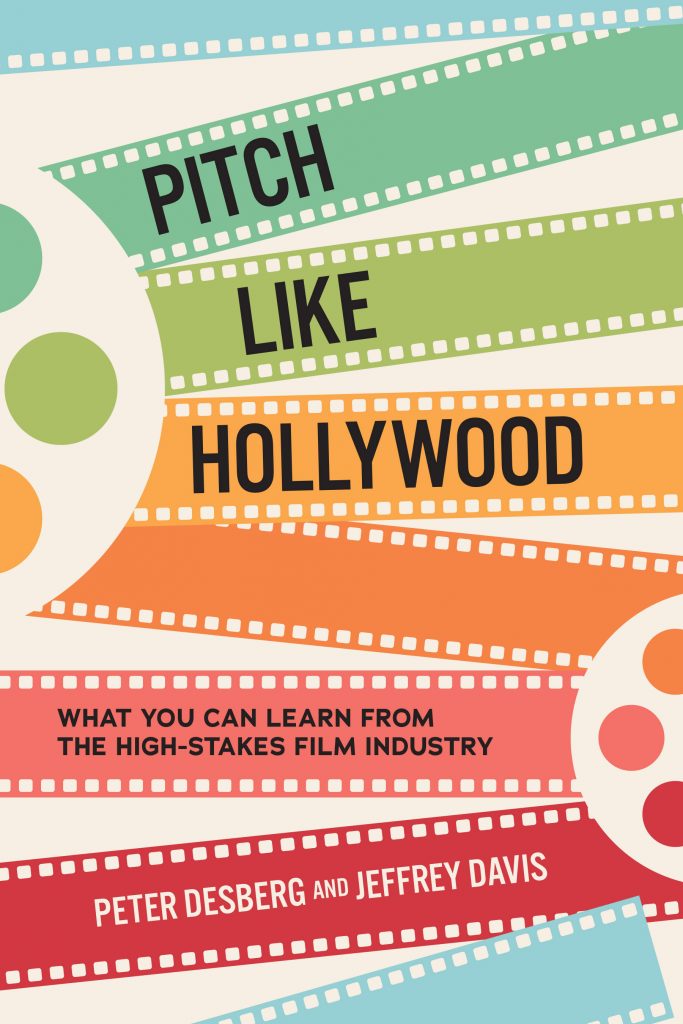Every Pitch Has Two Intentions
Over the years we’ve given talks on Pitch preparation at organizations from corporate retreats to writer’s conferences. We begin by asking participants to write down the intention of their presentation. Their intention is obvious, pitch the product or service they have spent months, even years developing. They look at us as if we’ve asked them to describe the color of their green hat.
The concept of intention is not as straightforward as the people in the green hats imagine. We demonstrate this by selecting a volunteer to share the intention they identified. At one seminar our volunteer was a wedding planner who taught a workshop to help couples who couldn’t afford a professional. Her intention was seemingly straightforward: to teach her audience how to plan a wedding.
“Wait,” we asked. “You teach couples how to plan a wedding? How long have you been a wedding planner?”
“For over twenty years.”
“And you’re going to teach them everything you know in an hour and a half?” Her face turned several shades of red. With a bit of prodding, she admitted when she talks to prospective clients she purposely overloads them with so much information that they’re overwhelmed. They realize all the things that could go wrong if they planned a wedding themselves. In the end, she was cornered and admitted that her real intention is to frighten her audience into hiring her to do the job for them. Once her real intention was identified, it became clear how she would restructure the way to present her workshop to achieve her real intention.
As a way of thanking her for her honesty and bravery, we helped her construct the first step in her opening. This was a practical gift because the first two minutes of a presentation are the most anxiety producing and now her opening will be dynamic, while she remains calm because her participants will be doing all the work. Instead of her listing what could go wrong, we suggested she ask the participants to yell out the worst things they’ve seen go wrong at a wedding.
“My cousin Gary took pictures instead of a professional photographer.”
“A friend planned an outdoor wedding and didn’t check the weather forecast…she had no money in the budget for a tent.”
“The flowers were wilted.”
“My sister ordered a lemon meringue cake, but a chocolate layer cake arrived and our favorite uncle is allergic to chocolate…”
This will be an effective opening because of its authenticity. It wasn’t her presenting the information; it was the participants themselves scaring each other.
Your intention shapes your presentation!
The Two Intentions of a Pitch
You just read about the advantage of identifying your real intention. Of course you want someone to invest in your product or service, but it’s only one of your goals. The wedding planner’s pitch appeared to be concerned with educating her clients, but she was also selling her services. Your hidden intention is to create an environment in which the buyer wants to work with you in the future.
This happens almost daily in Hollywood where we live. It’s common for a writer to pitch a project, get turned down and later hear from the same network or studio that they have another project they’d like them to write. Why did they get that call? Because the people they pitched to liked them.
Strategies to Use in the Hidden Pitch
A lot of what we’re talking about comes down to increasing your likability.
1. Responding to Criticism
Pitchers are often judged on how they respond to criticism. The worst way to deal with negative evaluations or intrusive questions is with hostility or defensiveness. Permit us to go back to Hollywood. The mistake inexperienced writers make is reflected in the way they take criticism. The attitude they project is, “I’m the professional writer, why are you telling me what to do?” There’s a name for people like this in the entertainment industry. “Unemployed.”
Smart writers accept and encourage suggestions from the people they’re pitching to. They know it’s the buyer’s way of signaling that they want to become creative collaborators. If they’re not making suggestions, there are strategies for soliciting them. These interactions are not confined to the entertainment industry. Venture capitalists we’ve interviewed told us the same story. If someone becomes defensive, they’re out.
2. Increasing Likability
As people listen to your pitch, they’re thinking, “Would I like to be in business with this person?” If they see your negativity when they’re trying to help you, they’ll scurry in the opposite direction. Look for ways to either show how you plan to deal with those issues, or how helpful it was to hear problems identified so they can be addressed in the future.
There’s abundant research demonstrating the positive effects of smiling. People who smile are liked more. While people are smiling, they’ve been shown to rate jokes as being funnier. Walk into the room smiling and you’ve taken the first step toward increasing your likability.
The way you enter a room has a strong effect on creating their first impression of you. There is research showing that a student’s confidence level as they walked to the piano for their recitals affected the ratings of their playing by the audience.
Making eye contact with everyone in the room makes them like you more. On the other hand, ignoring someone in the room because they’re not in a position of power can come back to haunt you. They may be taking notes today, and when they discuss you later, they ask the note taker to recount the information…ouch.
3. Listening Skills
Skilled listeners are judged as being more likable. Use paraphrasing to make sure they understand what you’re being told. A phrase like, “If I understand you correctly, you’re saying…” demonstrates your level of interest. Listening for free information is another way to establish your interest.
If they answer a question and give you more information than you asked for, don’t ignore this “free” information. They gave it to you because it’s important to them. Follow up on it. Active listening demonstrates your empathy.
The Results of the Hidden Intention
Understanding this hidden intention of a pitch will help you evaluate how successful your pitch was. If they don’t buy your idea, but your interaction was dynamic and friendly, you may be on your way to opportunities you didn’t foresee. Ignoring the hidden intention is a mistake that can limit a career.
Peter Desberg is professor emeritus at California State University, Dominguez Hills, and recipient of the Distinguished Teaching Award and Outstanding Professor Award. He is also a licensed clinical psychologist specializing in the area of stage fright and performance anxiety. The author of 23 books, he has been quoted by such publications as The Wall Street Journal, Psychology Today and The New York Times, and has consulted for companies including Apple, Boeing and Toyota in the areas of pitching and persuasion, corporate presentations, and using storytelling and humor in business presentations. He is the co-author of Pitch Like Hollywood: What You Can Learn from the High-Stakes Film Industry.
Jeffrey Davis is a professor of screenwriting at Loyola Marymount University in Los Angeles, and served from 2009-2019 as the department chair. Davis has also written and produced trade shows for Dick Clark Productions and counted among his advertising clients Dell Computers, Toyota of America and Honda. His has more than 30 credits to his name, including Night Court, Remington Steele, and documentaries for A&E, Discovery, and The History Channel. As a consultant, his areas have also included writing, pitching, and employing storytelling and humor in business presentations. He is the co-author of Pitch Like Hollywood: What You Can Learn from the High-Stakes Film Industry.
StartUp Mindset is a participant in the Amazon Services LLC Associates Program, an affiliate advertising program designed to provide a means for website owners to earn advertising fees by advertising and linking to amazon.com, audible.com, and any other website that may be affiliated with Amazon Service LLC Associates Program. There are links on this site that can be defined as “affiliate links”. This means that we may receive a small commission (at no cost to you) if you subscribe or purchase something through the links provided that.














Pingback: Top 3 Industries to Earn 6 Figures as a Consultant - Profiting From Business and Marketing News
Pingback: High 3 Industries to Earn 6 Figures as a Advisor - isuranceclub.cc
Pingback: Practise these Powerful Online Strategies To Become Irresistible To Customers ·